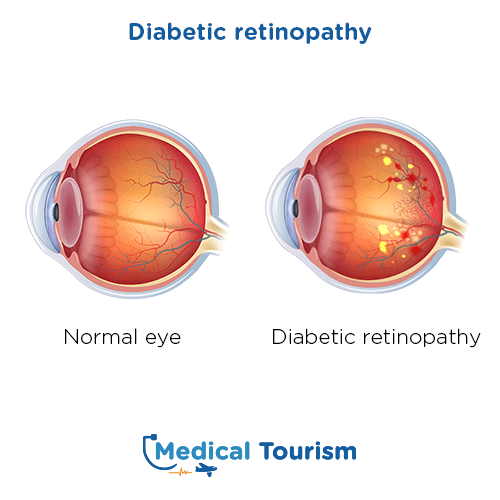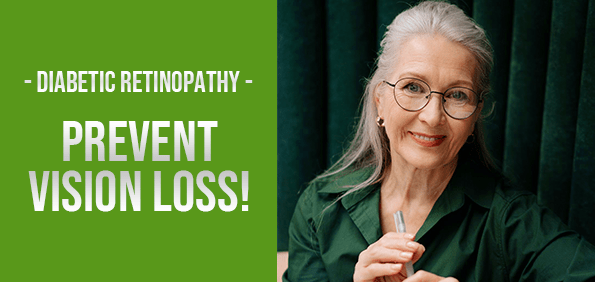The best board-certified doctors abroad
Diabetic retinopathy information and international destinations
Those with diabetes type 1, type 2, or gestational retinopathy suffer from diabetic retinopathy, an eye disorder that impairs vision and can lead to blindness. This disorder is the main contributor to blindness.
When blood vessels are damaged by high blood sugar levels, it results in diabetic retinopathy. The blood vessels expand, leak, or become incapable of carrying blood to the eyes. On occasion, the retina develops abnormal blood vessels. This disorder doesn't initially have any symptoms, but as it worsens, you may start to experience symptoms including hazy vision, floaty spots, and diminished colors. Treatment efficacy is increased by early identification.
Diabetic retinopathy has two primary stages:
Non-proliferative diabetic retinopathy (NPDR)
The most common and early stage of diabetic retinopathy is this. Small blood vessels that have NDPR release fluid and blood into the macula, causing the retina to enlarge and obstruct vision.
Proliferative diabetic retinopathy (PDR)
PDR is the more advanced stage of diabetic retinopathy. The retina begins to develop new blood vessels, which causes the retina to bleed into the vitreous. The new vessels will stimulate scar tissue, resulting in a detached retina.
The course of treatment would vary depending on the severity of diabetic retinopathy. Early stages typically call for cautious blood sugar management, but advanced stages call for laser therapy, eye injections, or even eye surgery.
The course of treatment would vary depending on the severity of diabetic retinopathy. Early stages typically call for cautious blood sugar management, but advanced stages call for laser therapy, eye injections, or even eye surgery.
Schedule a diabetic retinopathy treatment in top international destinations!
Benefits
Prevents the retina from detaching
Early intervention can stop eyesight loss
Blood leakage can be slowed down by laser therapy
The evolution of diabetic retinopathy is slowed by surgery
Early intervention can stop eyesight loss
Blood leakage can be slowed down by laser therapy
The evolution of diabetic retinopathy is slowed by surgery
Diabetic retinopathy
Procedure:
15 - 30 min.
Hospital stay: 30 min - 1 hr.
Cleared to fly: 1 - 24 days
Hospital stay: 30 min - 1 hr.
Cleared to fly: 1 - 24 days
After surgery
Out of town patients’ follow-ups are scheduled with the ophthalmologist after 1 - 7 days from a diabetic retinopathy procedure. Patients are clear for flying after 1 – 24 days from a diabetic retinopathy procedure.
Note: Follow-ups can be arranged as face-to-face or virtually. If needed, you can go to your primary care physician to remove sutures or get medication adjustments.
Additional images
View additional images for this procedure.

View more


Locations
Select the city of your choice to seethe doctors profile.
Dr. Nicolas J. Broghera
View more

Diabetic retinopathy frequent questions
Get answers to our most frequently asked questions and what to expect after the surgery.
Can diabetic retinopathy be prevented?
You can reduce your risk of developing diabetic retinopathy by establishing good lifestyle habits and treating your diabetes.
Is there a cure for diabetic retinopathy?
No, the most effective way to stop eyesight loss is early detection and treatment.
What precautions can I take?
Regular eye exams by an ophthalmologist can help identify diabetic retinopathy before you experience any signs or symptoms.
Disclaimer: This information does not reflect the medical advice from our clinics. All cases are different and this treatment may not suit you. Always refer to a medical professional with the certification and experience. All of our physicians are fully qualified to perform these procedures. For more information and diagnosis contact one of our top specialized clinics.
In all medical procedures, there are chances of complications, the specialist will provide you detailed information about the risks of the procedure, talk to the specialist directly.
In all medical procedures, there are chances of complications, the specialist will provide you detailed information about the risks of the procedure, talk to the specialist directly.

